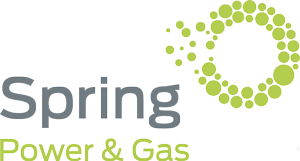When you flip a switch or turn on your stove, energy flows instantly—but the journey it takes to get there is anything but simple. Behind the scenes, electricity and gas go through a long and carefully managed process before they reach your home.
In this article, we’ll walk you through the energy lifecycle, from its source all the way to your outlets and appliances. Understanding how energy works can help you make smarter, more sustainable choices at home.
Where energy begins
The energy lifecycle starts with production. Here is where raw energy is extracted or generated from natural sources. There are two main categories:
Fossil fuels
These include natural gas, coal, and oil—energy sources formed over millions of years beneath the Earth’s surface and are used to produce heat and create electricity or power gas appliances.
Renewable sources
Renewables come from resources that naturally replenish themselves, such as sunlight, wind, water, and geothermal heat. These sources are used in solar panels, wind turbines, and hydroelectric dams to produce electricity.
According to the U.S. Energy Information Administration, in 2023, approximately 61% of U.S. electricity came from fossil fuels, 21% from renewable sources, and 18% from nuclear energy.
How electricity reaches your home
After electricity is generated—whether from fossil fuels or renewables—it begins its journey to your home through a network known as the electricity grid.
Transmission
Electricity is carried over long distances through high-voltage power lines. These lines move power from generation facilities (like power plants) to regional substations.
Distribution
From substations, the electricity enters lower-voltage lines that deliver it directly to homes and businesses. Along the way, transformers adjust the voltage to safe, usable levels.
Consumption
Once inside your home, electricity powers everything from lights and appliances to HVAC systems and electronics.
How natural gas reaches your home
The gas supply chain works differently from electricity but follows a similar lifecycle:
Extraction
Natural gas is drilled from underground wells. It is often found alongside oil and is captured at the same sites.
Processing
Before it can be used, natural gas is purified to remove impurities such as water and sulfur.
Transportation
Processed gas is sent through long-distance transmission pipelines, which carry it across states and regions.
Distribution
Local utilities receive the gas, reduce the pressure, and deliver it through underground pipelines to your home. A gas meter measures the amount you use for billing purposes.
Natural gas is commonly used for home heating, water heating, cooking, and sometimes even electricity generation.
Managing energy at the consumer level
Once energy reaches your home, you play a key role in the final step of the lifecycle: consumption. The way you use electricity and gas can directly impact:
- utility bills
- carbon footprint
- home’s efficiency
- The overall demand on the grid
Using smart thermostats, upgrading to efficient appliances, and sealing air leaks are just a few ways to reduce waste and make the most of the energy you consume.
The evolving energy landscape
As technology advances and climate awareness grows, the energy lifecycle is changing. More utilities are integrating renewable energy into the grid, and smart meters are enabling consumers to monitor their usage in real-time.
Even natural gas plays a role in supporting a cleaner grid. Because renewables like wind and solar depend on weather, natural gas provides a reliable backup during periods of high demand or low production.
Understanding where your energy comes from—and how it gets to you—is the first step in building a more sustainable future.
At Spring Power & Gas, informed consumers make better energy choices. That’s why we offer flexible plans, renewable energy options, and tools to help you monitor and reduce your energy use at home.
Want to take control of your energy journey? Explore our energy plans at springpowerandgas.us



